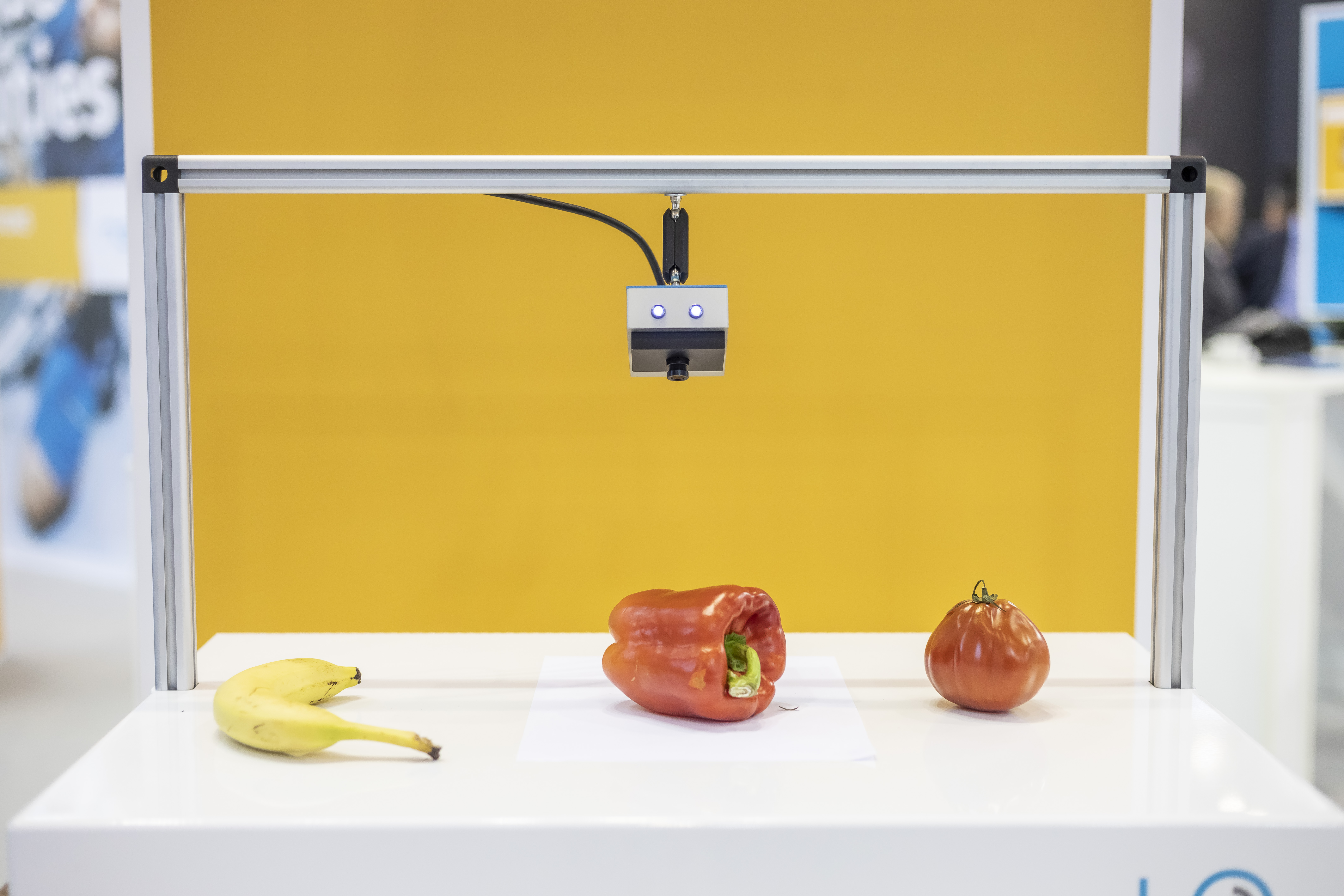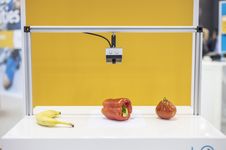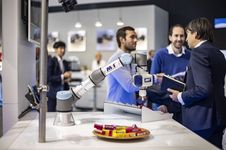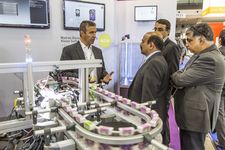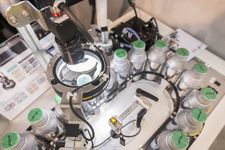High-quality food, economically produced Machine vision systems in the food and drink industry
One technology used in industrial quality control processes is hyperspectral machine vision, or hyperspectral imaging (HSI). Hyperspectral analysis can be used to differentiate between the bones and meat of poultry, for example. This makes separating the meat a lot easier. Other machine vision systems can recognise impurities in material flows (in the case of sugar, for example) or aid automatic cleaning of tea, herbs and dehydrated vegetables in optoelectronic sorting processes.
Systems must be able to inspect and process a wide variety of items, for examplefruit, biscuits or pizza — and artificial intelligence is already a reality in this field. Through deep learning, the most modern vision systems are able to determine whether an item on a pizza is part of the recipe or is a contamination. In other stages of production, AI cameras recognise open packaging, damaged paper or product jams. Industrial machine vision also ensures reliable production in the drinks industry: Camera-assisted detection systems scan thousands of bottles each hour, ensuring that they are full, detecting impurities and checking that the labels and caps are attached correctly.
As the food and drink industry is affected by price increases, it is increasingly important to produce products as reliably and economically as possible while avoiding faults. Machine vision is a key technology in ensuring a business’ competitiveness.
zurück zur Übersicht